Last Updated on 11/10/2020 by Desmond
India is a large black tea production country; the total yield was over 1.35 billion kg in 2019. Even though the proportion is not as large as Assam, each tea brand is rushed to snap up the Darjeeling tea once the harvest seasons come, which is praised as “Champagne of Teas.” What charm does Darjeeling tea has and make it so popular? Let’s see.
CONTENT
About Darjeeling Tea
History – Transplanted From China
Maybe some people didn’t know Darjeeling tea’s truth to this day; it originated in China.
The story happened about 200 years ago, when the British Empire was mighty, India was one of the colonies of it. British had a big demand for black tea. The Camellia sinensis found in Assam make tea plantations building becomes a possibility, and they did it.
Related Reading: How Assam Black Tea Rising.
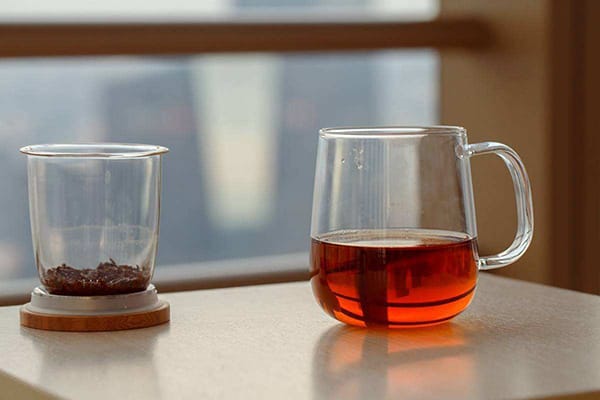
However, Assam black tea does not seem to satisfy the vast British market; they want more. 1841, A man named Archibald Campbell from the British East India Company cultivated the tea trees successfully in Darjeeling, a little village in West Bengal, where is located around the Himalayas. Yes, with the seeds from Chines Camellia sinensis.
Due to the different types of tea trees and the growing environment, the black tea made from these leaves seems more satisfied with the British taste. Thus, the British East India Company sent a Scotch botanist Robert Fortune to China and “bring” more seeds back to expand production.
It is generally recognized those seeds were from the Wuyi Mountain, Fujian, China. The tea trees may be the same as the ones which made Lapsang Souchong. Until today, Darjeeling tea’s shape and taste still remained some feeling of Chinese South Fujian tea, even though after many years of iteration.
The climate around the Himalayas is cold. Most tea plantations are distributed in the hillside over 1800, even 2000 meter altitude high. Unlike other tea producing countries, most tea plantations are face to the north but not the south. Due to the lesser sunshine duration, the Darjeeling tea tastes unique and delicate, just like the cold-wind blown from the Himalayas. And the grade and price of Darjeeling tea also grow by the higher altitude.
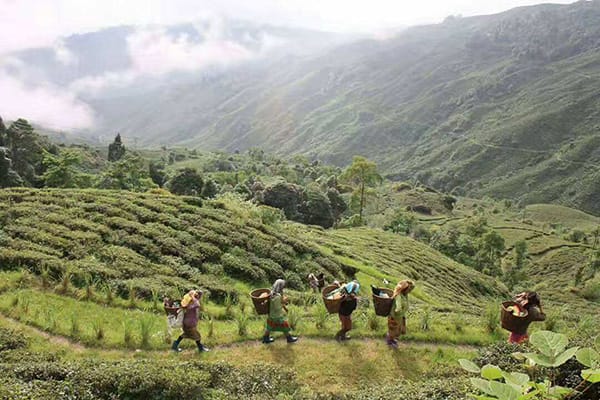
Development – From Black To Green
Although India won independence from the British colonial rule later, most of the tea plantations were saved and growing into one of the Indian economy’s pillars. The gov has a high focus on Darjeeling’s brand; only the tea plantation that passes the audit can take the Darjeeling brand. Now there are over 80 Darjeeling tea plantations are registered. Well, that seems like a lot.
However, except for some reliable tea plantations, most Darjeeling tea brand products maybe not really from Darjeeling. Due to the demand exceeds supply reason, many tea merchants will mix the leaves from other regions. Some of them even are not harvested in the same season, but they never indicate it on the package.
A meaningful change needs to pay more attention. Still, western countries are the primary customer of Darjeeling tea. At the very beginning, black tea was a trend, and the British also took it as a purpose to build the tea plantations in India. Most of the time, when we talking about Darjeeling tea, we are talking about the black one.
But in recent years, the taste of western people seems to have a change. They begin to fall in love with the tender leaves, especially the steaming green tea from Japan. So, to satisfy the customer, the Darjeeling tea plantations gradually reduce the fermentation degree in the processing.
Besides that, the local type Assam and the ones from China in that year are also planted less. A kind of hybridization tea tree named Clonal replaces them. Its leaves are tinier, taste flesher, and briskness.
Plus, the leaves had harder to ferment enough in such a high altitude and cold climate. So the Darjeeling tea gradually turns into something similar to the past-fermented oolong tea from completed-fermented black tea. Some Chinese tea lovers are joking that taste like the Wuyi Oolong when drinking the First Flush Darjeeling.
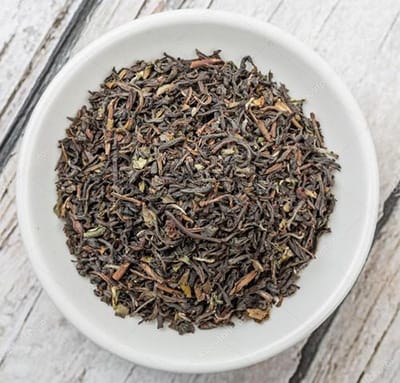
Recent – A Big Challenge
Darjeeling tea seems in big trouble this year. Due to the COVID-19 pandemic, the local tea farmers missed the rarest first flush tea harvest, which can sell at a good price. Even though some tea plantations finished the picking job, leaves can not be transposed out because the traffic is lockdown; they can only leave the leaves to rot.
In early June, the Darjeeling Tea Association (DTA) said that Darjeeling tea’s yield was expected to reduce by 1.5 million kg and lost about 2 billion rupees. Although the production and international trade begin recovery, the pandemic makes the prospect of tea plantations seems a little dim.
Darjeeling Tea Grades & Characteristic
Typically, black tea will be classified into Orthodox and CTC according to the processing method.
Orthodox Darjeeling
Orthodox refers to the processing method, which got with the seeds together from China in those years. That is the most traditional black tea processing method. Leaves will be withering, rolling, fermenting, and drying to produce raw tea. Then been further processing with the steps like screening to made the whole-leaf tea products. Due to the main customers are western people, Orthodox Darjeeling yield less, only about 1/10 of the CTC.
However, the Orthodox is the best of the Darjeeling tea. Tea masters typically pick the best leaves and buds to make the orthodox tea, the left for CTC. Some tea factories even only to process whole-leaf Darjeeling tea.
CTC Darjeeling
CTC is the primary processing method of Indian black tea, which refers to Crushing, Tearing, and Curling. This is a method invented by Indians themselves in the past century, mainly to satisfy western customers’ tastes. CTC Darjeeling can make an infusion in a shorter time but not resistant to brew. Typically used in the tea bags, something for canned selling. It is worth knowing that CTC black tea will bring more caffeine than other types of black tea.
Related Reading: Factors Influence Caffeine In Tea.
In fact, to Darjeeling tea, people are more used to classified it according to the harvest seasons; they called it FLUSH. Different flush Darjeeling tea has obvious different taste, also the prices.
First Flush
The first flush happens from March to April each year, also called “Spring Flush.” That is like the grading of Chinese green tea(such as Mingqian Longjing.) The leaves and buds are the tenderest during this period. Under the rain and fog’s moisten, the leaves got a slightly floral, taste more muted.
Besides that, tea masters typically process Darjeeling’s first flush through the Orthodox way and only let it be slightly fermented. That makes the first flush Darjeeling still with some green color, the infusion also light and show golden. You might mistake it for oolong if it was not in a totally different processing method.
The first flush tea is the rarest in the year, so you can picture how seriously lost the tea farmers by the pandemic.
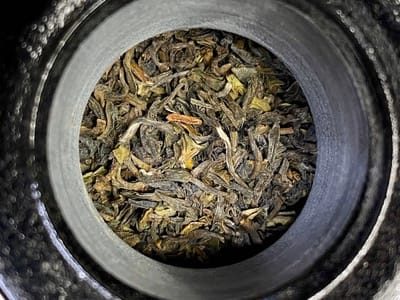
Second Flush
The second flush happens from May to June, the hot summertime. The leaves are fat and big during this period, and more mature. The tea infusion is deep-amber, tastes strong. The tea connoisseurs described this flavor as muscatel aroma and praised the tea as “Champagne of Teas.”
Although the second flush Darjeeling tea is not the rarest, it is the most popular. The strong, mellow, and astringent taste make it be regarded as the most authentic Darjeeling black tea.
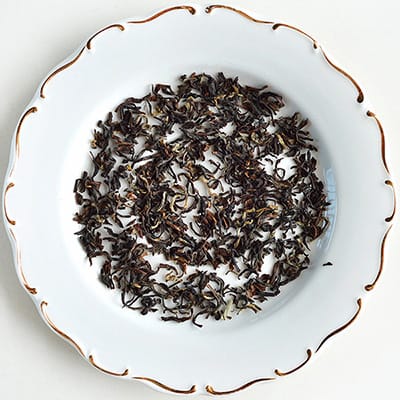
Autumnal Flush
The autumnal flush is the last harvest in the year, typically happens from September to October after the raining season past. The flavor of autumnal flush Darjeeling is closed to the second ones, but not so strong.
People usually thought the autumnal flush is not as good as the first and the second, so the price is relatively low. But the quality still awesome, that makes it has a high-cost performance and got lots of fans.
One thing worth knowing, some tea plantations will harvest between the time of summer and autumnal, the so-called”Monsoon Flush.” This tea batch is worst at both taste and quality, usually used in the blended and iced tea bags, which are mass-produced.

Should I Add Milk In The Darjeeling Tea?
Most people have a habit of adding milk when drinking black tea. Some milk proteins can counteract the bitter taste that the tea tannin brings and make the charming milk aroma.
Related Reading: How To Make Milk Tea Tastes More Excellent.
But some people got a disappointing taste after they adding milk to the Darjeeling tea. So they wonder to know whether suitable to add milk in Darjeeling.
It depends on what type of Darjeeling tea you bought.
Just like we talk about before. To most Orthodox Darjeeling, especially the first flush, their fermented degree and taste more close to the oolong tea, even though it processing in the black tea methods. The light and delicate taste seem better for just-brewing. Nothing wrong to you add milk in, but it may waste the tea’s quality.
And to CTC Darjeeling, especially the second flush, it will be awesome to drink it with milk.
When you just-brewing it, you can feel the full musky aroma and the astringency, striking your taste buds. After adding milk, the magical chemical reaction makes it change into a strong milk aroma and smooth. Picturing that the milk fragrance wrapping your tongue. There is no need for sugar, which seems redundant.